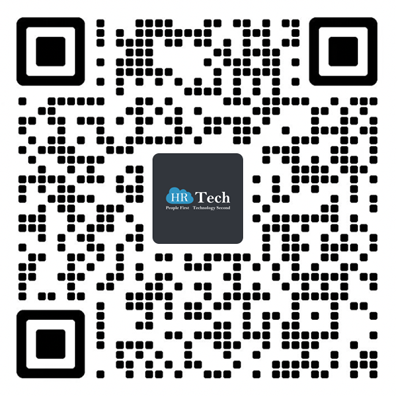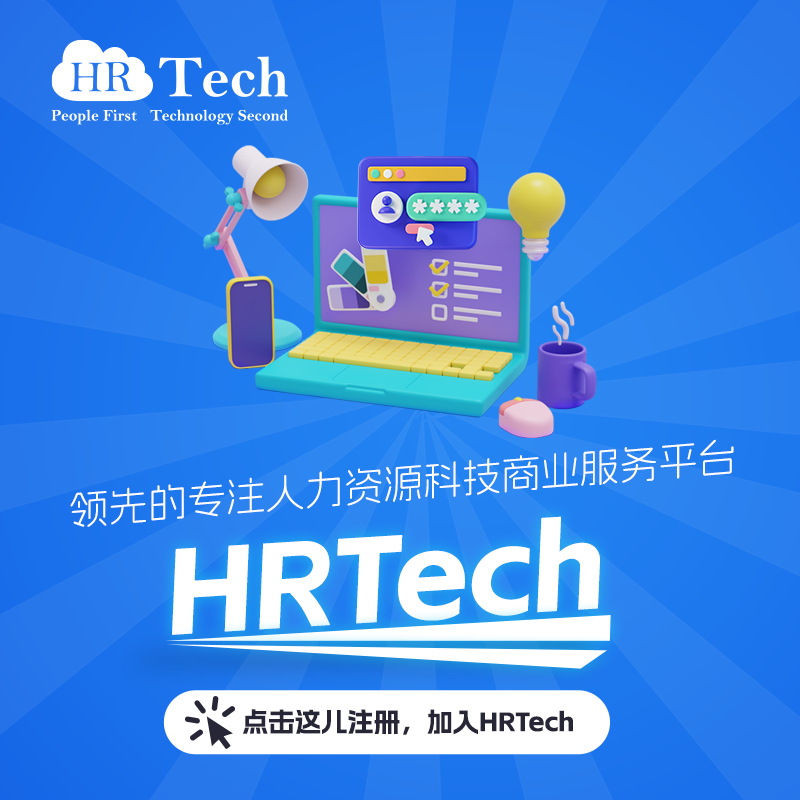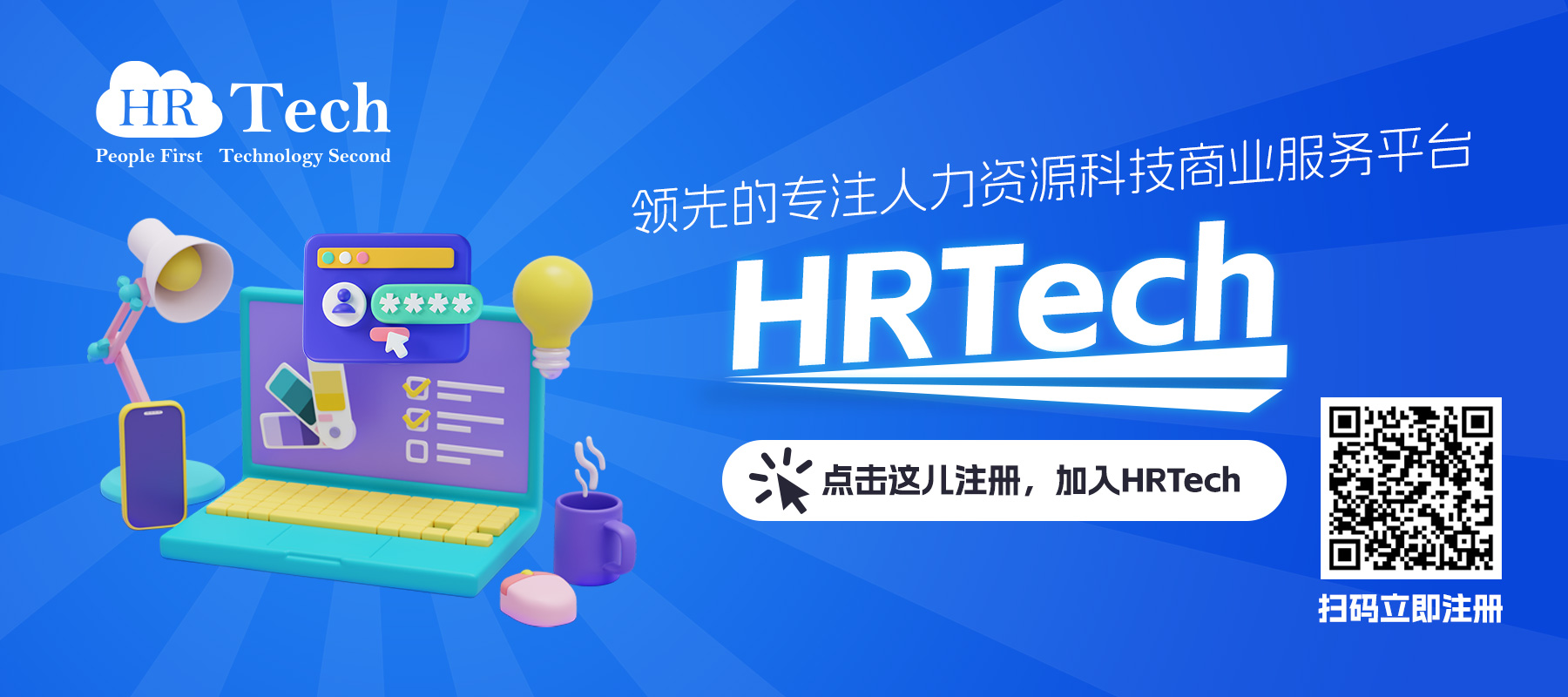头条
2018中国人力资源科技年度论坛在北京金茂万丽酒店成功举办,超过千人莅临现场,共话人力资源科技未来趋势
2018年10月17日,由中国人力资源科技HRTechChina主办的2018中国人力资源科技年度论坛·北京站在北京金茂万丽酒店盛大开幕!
本次论坛阵容强大,全国各地知名企业人力资源高管和行业领袖科技达人汇聚一堂,共同呈现数场高水准的主题演讲,更有思维碰撞的高端对话环节,引起现场千名人力资源科技同行的热烈反响!
论坛集结国内外领先的人力资源服务机构,现场展示了人力资源科技最新产品和解决方案,并与在场1500位企业CEO、CHRO、CTO、CIO和企业决策者、HR科技服务商和创新机构、顾问和HRTech专家共同见证科技为人力资源管理赋能!
此外,论坛还为人力资源科技领域的优秀企业和组织颁发了2018数字人力资源科技奖(Digital HRTech Awards 2018),以此感谢这些富有远见卓识的人力资源领域内的佼佼者,感谢他们为人力资源数字化管理所提供的便捷有效的支持!
同时,本次论坛受到多家行业知名人力资源科技服务商与机构的大力支持,它们分别是:THE BEST RUN SAP、SAP SuccessFactors、易路软件、中国平安HR-X、云问科技、专伟绩腾、盖雅工场、肯耐珂萨、平安养老保险、乐才、谷露、Lumesse、智思云、仁云、e成、CareerOn、赏仕JobsRnR、计蒜学院、优面宝、互动吧。
计蒜学院首席运营官杨斌受邀作为主持嘉宾为本场论坛开场。
首先演讲的嘉宾是HRTech China首席顾问Gawain,他以《2019全球人力资源科技发展趋势》为主题发表演讲。在演讲中,Gawain提到新的技术层出不穷,但对人力资源的挑战核心仍然是效率,中国的人力资源科技大部分还是在解决一些效率性的问题。Gawain注意到自今年起AI数字化已经进入到应用的场景,人力资源服务和系统已经进入到使用AI来帮助我们快速迭代产品和用户体验初级阶段。
易路软件CEO王天扬发表《薪社税福——迎接税改,易路随行》演讲。科技出身的王天扬自2014年成立了易路软件起就一直关注于如何把科技用在企业人力资源的领域,并于2019年成立了研究院。在薪社税福等问题上,王天扬表示希望能为大家打造一个智能的、内部与外部的大数据相联系的平台,借此能更好地帮助人力资源部门做好精算和分析。
接下来,百度HRSDC负责人王崇良在论坛上发表《如何打造智慧HR助力业务转型》主题演讲。王崇良表示,通过人工智能协助人力资源部门可以达到一种理想工作状态:事务性的工作只占人类工作的20%,而剩余60%的时间用于做更多决策层面的事务,比如客户服务;此外利用HRBD协助高管,做战略性的保驾护航。
在三位嘉宾精彩绝伦的主题演讲之后,主办方特别邀请CareerOn的创始人CEO李健为大家带来了10分钟的HRTech Pitch环节!
秣马厉兵,砥砺前行!上半场论坛迎来了最激动人心的时刻!为了表彰在人力资源数字化领域做出突出贡献和卓越成效的企业、机构及锐意创新的数字化产品,HRTechChina特别发起数字人力资源科技奖(Digital HRTech Awards 2018)评选颁奖活动。
获得企业最佳实践奖的有(排名不分先后):北京京东世纪贸易有限公司、天合光能股份有限公司、宜信、中国联合网络通信有限公司上海市分公司、蒂森克虏伯电梯(中国)、上汽大众汽车有限公司、仲利国际租赁、施耐德电气(中国)有限公司、海尔集团、阿特斯阳光电力集团有限公司、中国民生银行、平安科技(深圳)有限公司、上海浦东发展银行股份有限公司
获得机构奖的有(排名不分先后):图谱天下(北京)科技有限公司、上海外服(集团)有限公司、上海易路软件有限公司、上海肯耐珂萨人力资源科技股份有限公司、深圳市理才网信息技术有限公司、平安养老保险股份有限公司、乐才(北京)科技有限公司、苏州盖雅信息技术有限公司、思爱普(中国)有限公司
获得产品奖的有(排名不分先后):智思云、乐沐思上海(软件)有限公司、BELLO智能招聘、上海谷露软件有限公司、析源数据科技(北京)有限公司、云问机器人、专伟绩腾信息技术(上海)有限公司、克罗诺思软件(北京)有限公司、平安集团智能HR实验室 HR -X、SAP SuccessFactors
为以上获奖企业机构和产品送上真诚祝贺!
在一片欢呼喝彩声中,高端对话环节深度展开!现场嘉宾围绕《HRTech在中国——从投资人和机构角度看HR科技在企业应用趋势》话题各抒己见!在主持嘉宾、康得新集团人力资源中心人力资源总监周舟的引导下,百度HRSDC负责人王崇良、真成投资管理合伙人李剑威、易路软件CEO王天扬、AA投资管理合伙人刘扬以及HRTechChina首席顾问Gawain为大家带来了一场精彩纷呈的主题讨论,他们以投资人和机构的眼光对人力资源前瞻性话题进行多角度的深度讨论。
短暂的小憩过后,论坛下半场分两个会场同时进行!
SAP DHR分会场首先迎来了第一位主讲嘉宾,她是SAP 大中华区SuccessFactors业务拓展侯雨菲,在她的《SAP SuccessFactors 助力客户掌控⼈力资源管理全局》的主题演讲中,她通过分享自己在意大利旅游的体验——根据场景需求把线下信息直接推送到线上,联系到HR数字化的转型,详细讲解了SAP SuccessFactors的一体化、全民参与和灵活部署等特点。
接下来,SAP全球化团队HCM模块开发经理钱彬为大家带来《科技赋能智慧企业人力资源管理》演讲。通过展示智能HR协助人力资源管理的几个日常案例,钱彬总结道:“智慧HR需要的是一个高度集成套件,需要是智能化的技术,还有云平台作为强调的基石。从这三个方面考虑就是以人为本,用户体验。”
紧随其后来自阿特斯阳光电力集团的人力资源高级总监李佑颐,在《科技引领阿特斯光伏HR变革》分享了他的观点。“HR作为一个业务伙伴,一个未来的业务,驾驭业务的角色,必须面向管理、面向团队业务进行转型。”因此,一个HR系统的搭建对于业务的完成至关重要。
休息片刻后,SAP 云平台业务拓展总监刘宏江发表了他的演讲《千人千面 SAP云平台助力SAP SuccessFactors 个性化开发与扩展》。他认为HR产品和云服务不仅要满足共性的需求,还要进行个性化产品和服务的开发,利用科技做平台创新。
最后IBM全球企业咨询服务部企业应用SAP SuccessFactors解决方案负责人张军带来了精彩的压轴,在演讲《IBM在Digital HR时代的创新分享》中,他为大家展示了未来云化和智能化的阶段趋势图,分享自己的经验体会并生动演示了SAP的解决方案。
HRTech 分会场则由云问科技联合创始⼈茆传羽为大家首先带了精彩的演讲。在《Chatbot助HR工作高效轻松》中,茆传羽表示随着人工智能变得越来越强大,人力资源聊天机器人正在重新定义企业员工的体验。 HR Chatbot将简化和解答人力资源流程问题,包括对招聘入职常见问题解答、员工培训、员工福利、年度审核等。
盖雅 SaaS解决方案总监李品伟在其发表的主题演讲《下⼀代劳动力管理的数字化转型》中提供了最新观点。随着劳动力市场巨大的变革推进,劳动力成本持续上涨、人口老龄化和劳动力更新换代等问题凸显,人力资源数字化转型势在必行。
紧接着专伟绩腾首席顾问陈德金就《OKR-战略落地与创新生产力》发表演讲,他表示:任何目标都应该考虑时间的限定,不但要确定最终目标的完成时间, 还要设立多个小时间段上的 “时间里程碑”,以便进行工作进度的监控,与此同时,流程环节中的创新不可忽视。
短暂的互动交流之后,HRTech 分会场进入到“大咖来了”环节。
来自平安集团智能HR实验室⾼级总监李想为大家分享他的主题演讲《智慧HR时代已来》,他为大家展示了智能HR的应用场景,他表示智能HR作为人力资源管理专家们的工作助手,能够有效协助招聘等人事业务快速完成。
最后一位重量级演讲嘉宾是凤凰网副总裁李琳,她在《HRTech的世界已经改变,HR准备好了吗?》演讲中为大家敲响警钟,并展示了AR与VR等新兴科技手段在人力资源管理中的应用实践。
此次论坛集结全球及中国领先人力资源咨询公司、服务机构,他们结合自身的企业实践案例,以独特的视角分享人力资源管理的最新认知和深刻思考,探讨人力资源管理的未来发展趋势,与在场人员倾情分享自己的管理实践和深刻思考!呈现了一场又一场的知识盛宴!
未来的人力资源将更加专业化、技术化和智能化,人力资源管理者们要善用“未来思维”将管理和数字智能相结合,创造出由未来导向的更具个性化的人力资源技术服务。道路漫漫,中国人力资源科技的发展需要全体人力资源科技从业者们的共同努力!
最后,再次感谢我们的分享嘉宾、合作伙伴、参会嘉宾和志愿者们!中国人力资源科技论坛的成功离不开每一位伙伴,也真诚地期待在下一次论坛中与各位相聚!
头条
LinkedIn重建Recruiter平台推出跟踪系统和性别“洞察力”,推动多元化发展
文/Ingrid Lunden
LinkedIn,近日宣布一项重大改革。该公司将其Recruiter平台完全重建,与此同时推出了一款新产品,用来帮助雇主管理招聘、面试和招聘候选人。此外,LinkedIn也在尝试通过让招聘人员评估候选人的性别比例,来帮助企业提高多样性。
这些举措凸显出目前在新东家微软(Microsoft)的领导下LinkedIn的强势地位。LinkedIn上个季度的收入增长了37%(用户参与度增长了41%),带来了14.6亿美元的收入,现在它正准备为其用户群增加更多的货币化和服务。
LinkedIn的人才解决方案副总裁John Jersin在接受采访时说:“LinkedIn一直在加速增长,财务状况良好,人才解决方案也与此一致,所以我们觉得现在是做更多工作的最佳时机。” 。“我们超越了过去的产品,现在支持整个招聘流程,帮助求职者更多。”
同时,它在招聘市场面临着很多竞争,不仅仅是来自Facebook(它正在进行人才收购以构建更多智能工具帮助招聘流程,而不只是作为直接上市门户竞争),而且像ZipRecruiter这样的初创公司也带来了更加智能的旋转,使得人才与工作相结合。
“我们的运作规则与以往不同,”Jersin承认道。“候选人可以在网上找到,而且这个过程比过去更敏捷。因此,我们正在制定产品路线图以适应人才生态系统。”
Recruiter redux
新Recruiter平台的主要特点是简洁,它将在未来几个月推出。多年来,随着LinkedIn在广告等服务上建立货币化功能,该公司为那些使用该平台播出就业机会或搜索候选人的后端体验变得越来越分散,Recruiter(主动搜索人员) ,Jobs(您发布的职位列表)和Media(您可能会宣传这些职位的广告)都基本上作为单独的实体存在。
现在,这三个产品将合并为一个平台,在这个平台上这三个产品将位于同一个数据池中,以便提高工作效率。例如,当一个工作现在被发布后,LinkedIn会利用有关谁点击了该链接、该链接会出现哪些搜索以及为谁出现的数据,来帮助定制招聘人员在主动寻找候选人时得到的搜索结果。对于LinkedIn是如何做到这一点,有一个人工智能和机器学习的因素:LinkedIn读取的数据越多,就越能给招聘人员提供更多相关信息。
这也意味着更大的盈利潜力:如果LinkedIn知道招聘人员正在积极寻找职位候选人,那么它也会知道招聘人员还没有发布招聘广告。现在,它能根据一个动作建议另一个动作。
如果LinkedIn为那些想要寻找工作机会但又不想在未来被广告或招聘人员盯上的人开发了一种类似于隐身选项的东西,那将会很有趣。LinkedIn表示,隐身模式目前只适用于在查看个人资料视图时屏蔽您的身份。
Talent Hub
与此同时,Talent Hub(如上图所示)是LinkedIn最新成果,这些产品与人们使用其高级功能的方式很接近。Talent Hub是一个ATS(HR术语,申请人跟踪系统),它将让招聘人员在整个面试和招聘流程中管理候选人。如今,已经有很多产品做到了这一点——比如smartrecruitment、Zoho Recruit和Jobvite——LinkedIn也将开始更好地整合这些产品。但现在它也将提供自己的服务来与他们竞争,其理念是参与不同阶段过程的不同人也可以更好地交流。
有趣的是,在LinkedIn开发更直接的招聘产品的同时,它也在塑造当前和未来如何雇用人员时可以使用的数据点类型。今天,它正在努力尝试以一种可能改变多样性比例的方式进行定制,特别是围绕性别。
几周前,LinkedIn推出了一款名为Talent Insights的产品,首次涉足商业智能领域,这使得公司能够深入了解自己招聘的趋势,以及与他们竞争或与之竞争的公司的趋势。
今天,LinkedIn正在添加一项新功能,让这些公司现在可以看到企业内部的性别分解。然后,当公司正在招聘时,他们现在还得到另一个细节:他们现在将知道在给定的申请人群或潜在的角色候选人中性别细分是什么。LinkedIn现在还将提供一种关于招聘人员的方式,以了解公司的招聘广告如何跨性别界面展示。
对于那些希望在这方面更加积极主动的公司,LinkedIn还推出了更多与多元化相关的在线教育课程:关于面对偏见,包容性领导和管理多样性等主题。
这些是LinkedIn在多元化领域的宝贵步骤,以及它在帮助公司思考它方面可能发挥的作用。Jersin承认,尝试查询通常与多样性相关的属性可能是“棘手的问题”。鉴于LinkedIn不会在人们的个人资料中询问这些类型的细节,如果不是不可能积极主动就很难搜索少数族裔候选人,它可以打开一堆蠕虫来说明如何使用这样的功能。
(作为衡量当今情况的一种标准,在LinkedIn上搜索一个曾在麻省理工学院(MIT)工作过的工程师,似乎比找到一个非裔美国女性工程师要容易得多。)
我的猜测是,这就是为什么领英在一开始就采取了一种不那么直接的方式,提供指导数据和其他补充信息,以及为什么该公司把性别放在首位,而不是其他多元化属性。
“我们需要仔细考虑这个问题以及如何构建其他属性的平台,”Jersin说。“我们正在探索这是一个复杂而具有挑战性的领域。”
不过,这是积极的一步,并且有助于为LinkedIn(及其客户)未来如何处理该问题奠定基础。该公司表示,其最近一项旨在确定招聘趋势的调查发现,多样性是当今最受欢迎的招聘方式,其中78%将其视为“非常重要”。
“这已经成为我们产品的指导原则,”Jersin说,他将公司的方法描述为“设计上的多样性”。
以上为AI翻译,内容仅供参考。
原文链接: LinkedIn rebuilds its Recruiter platform, launches tracking system and gender ‘insights’ in diversity push
头条
芯片制造商美光将向人工智能公司投资1亿美元
文/Stephen Nellis
据路透社报道,美光科技周三表示,计划向致力于开发人工智能技术的初创公司投资1亿美元,这些技术将用于自动驾驶汽车、工厂自动化和其他新兴领域。
(图:The main entrance to Micron corporate headquarters in Boise, Idaho, February 3, 2012. REUTERS/Brian Losness)
美光首席商务官Sumit Sadana向路透表示,10多年前,这家总部位于爱达荷州的内存芯片制造商启动了一项企业风险投资计划,但迄今为止,该公司的投资一直“非常分散”,而且“非常接近我们芯片制造的核心业务”。
现有风险操作的返回已经稳固,该公司认为,它可以最终出售更多的内存芯片通过扩大其参与人工智能,因为现场处理大量的数据需要存储在它的产品上,他说在美光的第一个人工智能在旧金山会议上宣布。美光此前的投资很少公开披露。
Sadana表示,这些新预留的资金将用于开发人工智能的硬件和软件初创企业。他说,美光对投资无人驾驶汽车技术、增强现实和虚拟现实以及自动化工厂的技术特别感兴趣,因为美光在这些领域已经有了业务。
"我们将大幅加快投资步伐," Sadana称。
像教计算机识别图像或人类语言这样的人工智能任务需要大量的数据和计算能力。
因此,美光芯片行业的同代人也在这方面进行投资。英特尔(intc . o:行情)旗下的风险投资部门近年来已向致力于人工智能领域的初创企业投资逾10亿美元,英伟达(Nvidia . n:行情)也推出一项计划,帮助数千家小型企业使用其芯片。
美光表示,其为初创企业提供的风险资本中,有五分之一将用于由女性和其他代表性不足的集团牵头的机构。美光还在旧金山的会议上表示,其非盈利机构美光基金会(Micron Foundation)将提供100万美元的资金,用于资助大学和从事人工智能研究的非营利组织。
前三名获奖者是伯克利人工智能研究实验室(Berkeley Artificial Intelligence Research Lab)、斯坦福精密健康与综合诊断中心(Stanford Precision Health and Integrated Diagnostics Center)和AI4All——一个非盈利组织,为少量AI领域内学生提供夏令营。
以上为AI翻译,观点仅供参考。
原文链接:Chipmaker Micron to invest $100 million in artificial intelligence companies
头条
Facebook Workplace增加了算法提要,安全检查和增强聊天功能
文/Ingrid Lunden, Josh Constine
Workplace是面向30,000多个付费客户量身定制的Facebook企业版本。如今,为了与Slack和微软的团队竞争,它正在通过一系列新功能提升服务质量。
Workplace的负责人Julien Codorniou在接受采访时告诉我,这一新增活动在一个名为Flow的独立会议上宣布 ,这是Facebook首次为一种特定产品打造的活动,今后可能会越来越多。他将Workplace描述为“ Facebook的第一家SaaS创业公司”。他告诉我们,对于现有客户,Flow的目标是展示新功能,加深员工与Workplace的互动,增加黏性。对于企业软件合作伙伴来说,Facebook整合的目的是建立一个围绕工作场所的生态系统,以便它能适应任何业务。
在对Workplace的“聊天”功能进行大幅升级后,用户现在可以一对一或分组聊天、通话和视频对话,也可以以WhatsApp或Messenger的方式进行。通过添加回复,请勿打扰和固定功能,Facebook还可以更轻松地浏览您频道中的大量邮件——这是Facebook首次为Workplace引入算法排序。Facebook还通过Workchat将主安全检查功能从主应用程序带到Workplace,作为一种工具可由管理员控制,以检查关键事件期间员工的状态。
Workplace自成立以来的两年内已经获得了3万家企业作为客户(包括一些大型企业,如世界上最大的雇主沃尔玛);如今,它还加入了几家著名的大型企业:GSK、Astra Zeneca、Chevron、Kantar、Telefonica、Securitas、Clarins UK、Jumia和GRAB。
但Facebook从未透露过它在Workplace上有多少用户(用企业的话说,就是“席位”)。相比之下,Slack目前在7万个组织中拥有800万用户,而Facebook一年里还没有更新3万用户。
(图:Facebook Workplace multi-company chat)
Facebook今天推出的一系列功能,无论是广度还是目标,都值得关注。在功能方面,有些帮助让Workplace更接近Facebook的核心体验,但最终它们的目标都是让Workplace更适合企业已经使用IT的方式。
正在整合的聊天功能基于Workplace中已经存在的最小聊天功能,并且基本上创建了类似于WhatsApp或Messenger的东西,它位于与Workplace相同的安全框架内。这是Facebook向统一通信迈出的第一步——这是企业IT的一个特定分支,曾经以PBX和其他昂贵的物理设备为中心,但最近随着IP和基于云的系统的声音的增加而变得更加虚拟化用于任何互联网连接。
Workplace已经为多达50家公司提供可以在平台上进行多组织对话功能,现在如果这些组中的某些成员希望通过语音或视频呼叫将对话转移到更直接的渠道,可以直接从应用程序内部执行此操作,而无需打开单独的消息传递客户端(可能或可能不在IT的控制之下)。最多50人可以加入Workplace中的视频通话。
这三个功能可以帮助您更好地组织对话——请勿打扰、回复和固定重要项目,特别欢迎那些在Workplace上拥有特别“嘈杂”频道的人。
Codorniou说,回复将“像在WhatsApp”一样工作——您可以在其中选择一条消息并回复它,它将在稍后的Feed中显示其微线程。
但它们可能是最值得注意的,因为它们将是Facebook首次向Workplace引入“算法”排序。对于那些已经使用普通Facebook,Twitter或其他社交媒体服务的人来说,算法排序是众所周知的,因为它会根据帖子的顺序,向你展示哪些被认为更重要,哪些是最新的。
在“钉”的情况下,Facebook允许IT管理员和用户有效地参与算法排序:管理员可以将“重要”帖子钉到Feed的顶部,这将影响用户看到的内容,并首先做出响应。“如果CEO发布一条信息,这可能比发布实习生的信息更重要,”他说。
同时,,“请勿打扰”会让用户设置不会收到消息的时间,但当您再次“返回”Workplace时,Facebook会决定决定你浏览的内容的优先级。
(图:Facebook’s VP of Workplace Julien Codorniou)
Codorniou指出,Facebook使用机器学习和AI“确保如果你两周不使用Workplace,也能在新闻Feed上获得相关的信息。”它用于排序的信号你的同事,以及你最活跃的团队。“这是默认的算法,”他补充说,这是Workplace用户提出的要求。“人们不再相信按时间顺序排列的Feed了。”他说,“重要的是要保证与沟通团队的联系。”
安全检查也符合这一概念。在这里,Facebook将把IT managers/Workplace管理员放到驾驶座上,“让他们掌握这项功能的关键”,Codorniou说,而常规的Facebook使用和分发功能则由Facebook本身控制。
Frederic带着一名潜水员在这里进行安全检查,但正如Codorniou向我描述的那样,主要的想法是,当特定地点经历紧急情况时,它允许公司“跟踪和了解谁是安全的,谁不是”。他说,公司可以使用一些应用程序来进行安全检查,有时他们可能会使用SMS,但这些应用程序往往需要更多的手工操作,而且很难快速执行。Facebook没有透露他们的应用程序在沃尔玛和星巴克这样的组织中的渗透程度如何,但这可能成为帮助Workplace更广泛分布的一个杠杆。
“员工是公司的第一大资产,这有助于确保您的安全,”他补充说。“人们不想玩Candy Crush,但像Live这样的东西(去年Workplace推出的游戏)和安全检查是相关的。它们有助于将公司变成社区。”
(当然,社区是Facebook最近的一大主题。)
所有这些更新都发生在许多人都在关注Facebook在用户隐私和个人数据方面的做法的时候。
几个月前,剑桥分析公司(Cambridge Analytica)丑闻特别强调了这个问题,尤其是第三方如何能够获取用户信息; 最近两周前Facebook遭到批评,当时有人发现其中一个功能中的漏洞将用户信息暴露给恶意黑客。这些问题都与Facebook的核心消费者应用程序有关,但我不禁想知道它对公司的企业业务产生了什么样的影响——考虑到工作场所网络中的安全级别通常会更高,因为它们是连接到公司信息。
“我们当然有一些问题,但我们没有理由相信Workplace受到了影响,”Codorniou说。他指出,曾经有一个功能是使用用户的Facebook ID登录Workplace,但是这段时间这一功能被禁用了。“我们一直在调查,但大多数客户都是单点登录,”他指出,那些公司使用Okta,One Login和Ping等服务将员工连接并登录到他们的Workplace空间。
Facebook的规模为企业带来了巨大的优势。办公堆栈的消费化意味着Facebook可以轻松移植其熟悉的功能。它足够大,可以在公司内部广泛使用dogfood。而且它已经与许多世界顶级品牌建立了广告关系。但作为一个科技巨头,伴随着相关的丑闻和不断的批评。Facebook将不得不说服商界领袖他们的社交问题不会使他们的形象蒙上阴影。
以上为AI翻译,观点仅供参考。
原文链接: Facebook Workplace adds algorithmic feed, Safety Check and enhanced chat
头条
“隐身”两年后,谷歌前前HRVP公布其新的创业公司
文/Simone Stolzoff
Laszlo Bock是HR世界里的摇滚明星。
在谷歌——一家在“最佳工作场所”名单上常年受到追捧的公司,他管理人力资源达十年 之久;之后他写下了《重新定义团队:谷歌如何工作》成为《纽约时报》(New York Times)打造企业文化的畅销书;然后,他创办了自己的公司Humu。
在两年的大部分时间里,Humu 以隐身模式运作。尽管该公司很少错过讨论其使命的机会——“推动人们每天都做最好的自己”——但它几乎没有提供公司实际行动的细节,甚至在5月份宣布已筹集4000万美元风险投资后也是如此。
近日,秘密终于揭晓了。
在一篇博客文章中,Bock描述了Humu的旗舰产品——Nudge Engine。这是一款使用行为科学和机器学习的应用程序,可以在整个工作日为员工提供个性化的“轻推”服务。“轻推”可以简单地提醒您要感谢一位做得很好的同事,或者在会议期间征求一位比较安静的团队成员的意见。
虽然“轻推”这个词可能有一种柔和的含义,但是Humu技术的基础理论来自于硬科学。去年,Richard Thaler教授因其对“ 轻推理论 ”(nudge theory)的研究获得了诺贝尔经济学奖,他的研究证明了小的提示对人们的行为有很大的影响。
“员工之间每天要进行数百万次的交流,从开会到评估,再到开门,不一而足,”Bock说。“在Humu,我们相信每个人都可以尽自己的努力来改变每一个人。”
一个温暖而模糊的推送通知平台可能看起来不像是强大商业模式的基础,但员工敬业度是一门难以追踪和衡量的黑暗艺术之一。工作效率、员工留存和员工士气都与员工在工作中的感受直接相关。
Humu适合更大的教练网络趋势,在这个趋势中,公司实施人工智能工具来指导员工的整个工作日。 Chorus为销售人员提供实时反馈。Textio 让招聘经理知道在他们的岗位上使用的最佳语言。
虽然技术肯定可以帮助人力资源,销售经理和文案编辑的工作,但办公室文化最终都是由人类塑造的。员工们是否会感到被迫遵守机器驱动的建议,最终取决于他们。
以上为AI翻译,观点仅供参考。
原文链接:After two years in stealth mode, the former head of HR at Google reveals his new startup
头条
重磅!LinkedIn将收购Glint:员工敬业度市场的重大变化
今日消息,职业社交网站LinkedIn 宣布收企业服务初创公司 Glint,相关收购条款尚未公布,消息人士称收购金额超过 4 亿美元。Glint 团队将并入 LinkedIn,但将会独立运营,由其现任 CEO 和创始人吉姆 · 巴内特领导 。Glint 公司总计融资了将近 8000 万美元,在上一次融资活动中,估值约 2.2 亿美元。
多年来,LinkedIn公司的主要精力都放到了如何扩大活跃用户数量和营收上。它通过其平台上的付费用户,尤其是企业用户来创造营收。现在,LinkedIn公司的一些创收产品包括高级会员、招聘(人才解决方案)和教育。收购Glint公司有助于LinkedIn公司推出更多针对其用户的服务。它的现有服务已包括教育、CRM(客户关系管理)工具以及企业情报服务。
Glint 公司的现有产品包括员工参与度、员工生命周期、管理有效性和团队有效性。该公司通过对员工进行调查并使用自然语言处理工具来分析数据,以衡量员工对管理、薪酬和企业文化等的感受,并给企业客户提供建议。
目前LinkedIn公司正在构建各种解决方案来帮助员工发展自己的事业(例如通过其教育产品来培训员工),而这又可以促进该公司的其他服务,因为某些反馈信息可以用来打造具有针对性的员工培训计划。
以下为LinkedIn官方宣布:
今天,我们宣布达成收购Glint的协议,Glint是员工敬业度的领导者,帮助组织中的人员尽最大努力,发展他们的技能并改善业务成果。结束后,欢迎Glint加入LinkedIn家族,我感到非常兴奋。
作为LinkedIn的人才和学习产品的负责人,我花了很多时间思考如何帮助回答一些让人力资源领导人在夜间工作的最棘手问题:如何了解整体健康状况和绩效我的组织?我在哪里可以找到我需要的新人才?我的团队的能力是否与业务需求保持一致?我如何确保吸引,培养和留住最优秀的人才来建立成功的团队?
考虑一下这些机会。
凭借LinkedIn对更大员工队伍的洞察力以及Glint对员工敬业度和技能的内部观点,我们将能够帮助人才领导者回答所有这些难题。
这是我对我们可以一起做的潜力感到兴奋的原因之一。我们相信Glint已经发现了每个公司应该做的现代人力资源最佳实践:定期收集员工对工作,文化和领导力的反馈,并为领导者提供将这些见解转化为行动所需的工具。在LinkedIn,作为Glint的客户,我们体验到了第一手的价值。Glint为管理人员提供工具,以回答有关他们所拥有的人才的健康和快乐的问题,同时为各级管理人员提供他们需要改进的机会和洞察力。现在想象一下,通过我们的综合服务,我们可以将经理从Glint员工那里获得的具体反馈转化为个性化的LinkedIn学习体验,重点关注有助于他们改进的主题,
Glint拥有广泛的客户群,每天都使用它来帮助人们加速他们的职业生涯,并受到人才领导者的喜爱和信任。Glint的使命是帮助人们在工作中更快乐,更成功地完全符合LinkedIn的使命,即连接世界各地的专业人士,使他们更高效,更成功。
我们对Glint的整合以及我们可以共同推动Glint的发展所带来的可能性感到兴奋。Glint团队了解伟大的公司是由伟大的团队建立的,伟大的团队由伟大的文化推动。我们不能更高兴Glint的才华横溢的团队将加入LinkedIn。
Glint首席执行官兼创始人Jim Barnett将向我汇报,Glint将作为LinkedIn内的团队运营,以便他们能够维持和加快业务发展势头。所有其他Glint高管将继续向Jim报告,除了人力资源,财务,信息安全和法律,他们将加入LinkedIn的职能团队。在接下来的12-18个月内,我们计划在LinkedIn内功能整合团队。
你可以在这里从吉姆那里了解更多关于Glint的愿景。
在完成惯例条件后,收购预计将于2019年第二财季(截至12月31日)结束。
作者:Daniel Shapero Vice President Talent Solutions, Careers, & Learning at LinkedIn
来源:https://business.linkedin.com/talent-solutions/blog/product-updates/2018/linkedin-and-glint-helping-talent-leaders-build-winning-teams
下面是Josh Bersin的评论~
本周在LinkedIn Talent Connect会议上,LinkedIn宣布了一项突破性的举措:计划收购Glint,这是员工敬业度解决方案的市场领导者之一。
Glint是我公司成立以来一直在谈论的公司,它为员工调查和传感提供了最具可扩展性和人工智能驱动的解决方案之一,公司发展迅速。首席执行官和创始团队拥有硅谷技术血统,因此他们从一开始就以这种技术为中心。
虽然构建员工调查似乎很简单(有数百种工具可以做到这一点),但实际上部署了一个“监听架构”,可以收集年度调查,新员工调查,退出调查以及员工数十个其他时刻的数据。事业,其实很辛苦。IBM收购了Kenexa,试图追逐这个市场,经过两年的研发基本上放弃了该平台并决定退出该业务。CEB(现为Gartner)也是如此。
为什么这么难?因为调查和收集数据的问题实际上更多的是分析和AI问题,而不是调查问题。
每次从员工处收集数据时,您都需要知道他们所在的部门,您正在调查的活动以及有关其位置,时间和其他工作相关信息的各种人口统计数据。您是否知道上午进行的民意调查比下午的民意调查更积极?或者,那些在移动设备上进行调查的人往往比坐在他们电脑上的人更积极?
然后,当您收集所有这些数据时,您希望将其与许多其他信息进行组合,比较和聚合。我们如何将调查数据与销售效率相关联?周转?客户满意度和保留率?所有这些都是公司提出的常见问题,当平台笨重时,公司必须建立自己的数据仓库或在Excel或其他工具中进行大量额外工作。
第三,还有更多的分析要做。现在我们需要有关组织网络分析(沟通模式),情绪(调查和电子邮件的基调和调整)的数据,甚至想要比较工作活动的数据。一家公司在办公桌下安装了热探测器,以确定人们何时坐在他们的办公桌前(他们试图让人们进入办公室),现在许多公司都会查看徽章阅读器数据,旅行数据,甚至感觉到的智能徽章压力在你的声音。
所有这些数据都是人口分析不断扩展的世界的一部分,因此像Glint这样的平台比仅提供和报告调查的工具更具战略性。
LinkedIn有很多理由进入这个市场
首先,该公司现在提供广泛的人才和学习解决方案,因此帮助公司了解参与是自然的下一步。拥有超过6亿用户和数百万企业客户(仅限LinkedIn Learning有超过1400万付费用户订阅),LinkedIn现在也可以帮助所有这些公司收集参与数据。这是一个快速增长的业务,LinkedIn可以轻松地快速销售此解决方案。
其次,该公司的核心是以数据为中心的业务。LinkedIn最重要的创新是该平台不可思议的识别人员,将您与需要知道的人联系起来的能力,以及作为职业生涯各阶段人们的学习和协作平台。想象一下,如果将雇主参与数据添加到这种组合中,LinkedIn可能会变得多么强大。(注意Glassdoor。)
第三,LinkedIn学习和招聘解决方案与员工调查数据非常相互依赖。当一个人在工作中挣扎或者可能落后于他们的角色时,他们往往有很多话要说公司可以做些什么来改善他们的生活。这种类型的参与数据对于L&D或人力资源组织来说是非常宝贵的,可以直接输入到LinkedIn Learning中,以提供更强大的学习解决方案。像Degreed和Edcast这样的LXP供应商正在努力构建用于培训的机器学习算法:如果将Glint驱动的调查内置到该平台中,LinkedIn可能能够快速推进。
第四,我不得不相信LinkedIn会更多地使用Glint的平台。Glint推出了一个绩效管理工具,因此LinkedIn可以决定进入该市场。但进一步说,工作的未来都是关于人工智能驱动的建议; 为个人提供更好的工作,为管理人员提供便利,为人力资源专业人士提供更强大的行动导向。Glint的AI驱动情绪分析和纵向调查分析(Glint可以将各种调查连接到一个非常强大的综合报告中)无疑将帮助公司提供更多创新。
最后,我们真的不知道微软将在这一切中发挥什么作用。到目前为止,微软与LinkedIn的整合有点稀疏,但想象一下这个世界上Glint支持的参与度调查出现在Office中?人力资源的一大主题是我称之为“ 工作流程中的人力资源”。这次收购确实使这种潜力更接近现实。
我一定会让你快速了解这一切的发展方向。我要说的是,这显着改变了员工敬业度市场,我们可以期待LinkedIn和Glint在未来几个季度中出现一些有趣且令人兴奋的新发展。
(注意:此市场中的参与供应商包括CultureAmp,TinyPulse,Ultimate Software,ADP,CultureIQ,SurveyMonkey,HighGround,Quantum Workplace,Qualtrics,Great Places to Work,Energage,Gallup,AON Hewitt,Humu等等。)
本文由AI翻译完成,仅供传递资讯参考。
参考链接:LinkedIn斥资4亿美元收购企业服务初创公司Glint
LinkedIn acquires employee engagement platform Glint
LinkedIn + Glint: Helping Talent Leaders Build Winning Teams
头条
领导者还是落后者:评估人力资源科技数字化成熟度的5个方法
为数字未来塑造业务是CIO们业务中的一大挑战。EY的一项研究显示,90%(87%)的数字化首席信息官(cio)特别关注IT如何推动业务转型。这是一个涉及流程、系统和人员转换的挑战。在这个过程中有一个关键的步骤——日复一日支持员工应对与工作相关的挑战。因此,数字化的过程应该反映在每个人的接触点上——从雇佣到离职。
在开始数字化之旅时,应该满足多样化员工基础的需求。这意味着使用技术来建立完整的透明度,赋予员工权利。在踏上这条征途之前,对人力资源技术进行反思将有利于技术潜力的发挥。
以下是5个具体的方法。
1.是否有关注技术意识?
任何数字化的旅程都始于人力资源功能的技术化意识。为此,人力资源内部的心态和文化必须首先改变。人力资源专业人员本身应该数字化配置,并了解当前的趋势。他们必须远离盲目地推动工具和系统。技术的态度必须延伸到各级领导。文化和人们工作方式的转变将直接影响到数字产品的使用率。
2.你能用技术与员工建立信任关系吗?
一个典型的例子是在办公室使用互联网。员工不被鼓励使用个人设备,而且经常被限制使用办公室网络。这种态度需要改变。企业需要通过透明的方式来建立与员工的信任关系。这意味着要有一个系统的办法来建立正确的边界,使员工能够进行无缝工作。鼓励员工亲身体验分析工具、人工智能和基于ML的招聘助手、聊天机器人等工具,将进一步加速你的旅程。
3.你们的技术支持CIO-CHRO合作伙伴关系吗?
人力资源业务合作伙伴必须积极致力于地高科技工作。问一些问题,比如“我们怎样才能实现无纸化?”,“我们如何提供一种“零接触”的体验?”,“我们怎样才能消除体力劳动?”“我们怎样才能把一个多步骤的过程减少到单步骤?”这些问题有助于人力资源部门思考数字化层面的问题,进而有助于与IT部门建立正确的协同作用。
真正的数字转型成熟度曲线是通过提供“WhatsApp或Facebook”等类似于工作场所的经验来实现员工生命周期(从入职到离职)的数字化管理。“每一项工作都是一项技术工作”这句话从来没有比今天更正确。
4.你正在建立未来技能吗?
组织必须为数字时代寻找并培养新的技能。工作技能可以分为五种类型:体力;基础认知;高级认知;社交和情感;技术。
越来越多重要的是,好奇心、学习能力、识别机会领域的能力,以及引入正确的技术实现数字应用的能力。为了建立正确的能力,创建一个学习生态系统,让人们了解他们想去哪里并不断成长,这是必不可少的。这意味着提供“学习地图”和数字内容,让人们与公司一起成长。为了实现这一点,CHROs必须与CIO密切合作,并与利益相关者和供应商一起推动议程。
5.把员工放在数字化的中心
从人力资源的角度来看,数字化转型的最大客户是员工。一切都必须从保持“员工之旅”开始。无论是聊天机器人,还是基于AI-ML的选择过程,管理者们在雇佣员工之前都必须考虑到员工。员工旅程映射是数字化转型成熟度曲线的基石。
任何数字转型都是分阶段进行的。敏捷就是目标,在数字化的过程中允许渐进式的即兴创作,同时优化资源投入,按时进行校正。
组织需要灵活,同时通过平衡的控制策略保持遵从性。只有当数字技术的主要支持者,如人力资源、信息技术和最高领导层共同努力的时候,这才有可能实现。
一个建设性的合作
HR和IT都是具有类似SLA(service-level agreement,服务品质协议)的内部服务提供商。他们应该共同创造,而不是单独作业。数字化要求将功能(IT和HR)结合在一起,首要关注的是输出。换句话说,它意味着关注员工通过自助服务解决的问题的数量。自我学习的个人和学习组织将波动和破坏作为一种生活方式,是人力资源KRA(Key Result Areas,关键结果领域)为了推动组织的明天,而不是今天或昨天。
以上为AI翻译,观点仅供参考。
原文链接:Leader or Laggard: Here’s how to assess the digital maturity of HR tech?
头条
展望2019:人力资源科技变革
文/Sara Pollock
数十年来,人力资源技术一直在不断演变。从移动到云计算,到视频的兴起,再到大数据,我们已经跟踪这种演变相当长一段时间了。成功的企业不断优化新的自动化流程,以进一步形成世界级的人才管理战略。事实上,全球65%的雇主认为,人力资源技术将解放员工,让他们专注于知识密集型的工作。
人力资源技术已经走到了尽头,它将走向何方?搜索者和求职者不再像以前那样浏览网页,现在是时候更新我们的联系方式了,也时候更新我们推销自己的方式了。这意味着我们需要比以前更容易、更快、更好,吸引到注意力,并保持注意力,获得我们想要的人才。
众所周知,如今的招聘市场是求职者主导的,86%的招聘人员和62%的雇主都有这种感觉。以下是一些人力资源技术的关键领域,它们正引领着我们走向一个更好、更成熟的招聘未来。
自然语言处理(NLP)
自然语言处理(Natural Language Processing,NLP)由人工智能技术组成,许多人认为人工智能技术可能像我们人类一样处于思考和说话的边缘。有一点很重要,那就是要明白这对人力资源的多个方面都有帮助,而不仅仅是招聘。NLP技术的作用是要真正讲我们的语言,并且能够区分特定的情绪,而不是简单地通过计算机代码翻译。
不知道如何才能使用这样的系统?当应用于领导力激励,员工反馈调查,甚至聊天时,NLP技术可以用来深入了解员工对工作场所的想法和感受。NLP对你的员工一视同仁,让你能够立即采取行动,帮助他们和你的候选人获得经验。
这不仅是确保您的员工满意的好方法,而且您还可以使用这个系统来询问关于业务内数据的具体问题。NLP可以包括PTO查询,工资信息甚至预算支出。系统具有无限可能。
虚拟现实(VR)
如果你关注过最新的视频游戏或培训研讨会,那么你就知道虚拟现实(Virtual Reality,VR)正在接管一切。2017年的一项研究发现,只有18%的受访者对VR不感兴趣。这意味着82%的人对这项技术感兴趣,这只是该技术正在经历的惊人增长的一小部分。模拟开始在世界的每个角落萌芽——包括人力资源。
这项技术使新员工比以往任何时候都更容易进入现实世界真实场景中,而不会冒着与客户沟通不畅、扰乱客户订单或其他任何耗费公司时间和金钱的事情的风险。相反,通过VR的使用,他们可以完成日常任务,以便在真正实施之前掌握窍门。
分析(Analytics)
你可能曾经使用过某种形式的分析,但它们从来没有像现在这样重要。使用最新的HCM解决方案,雇主现在可以深入了解员工信息,以更好地理解员工生命周期的重要方面,如离职统计和原因,绩效和领导策略的整体有效性。这种洞察力还可以帮助你发现公司内部的潜在问题,比如不平等和雇佣偏见。
今天,这些信息被用来更进一步的研究,不仅是用于识别问题,而且还用于预防问题。通过预测分析,公司可以更好地根据新员工、领导方法等来确定可能出现的人才指标和风险。根据预测解决方案的数据,工作场所伤害的预测准确率高达97%。在人工智能和机器学习的帮助下,这项技术正在不断进步,以帮助你在问题出现之前制定策略并加以改进。多年来,人力资源技术一直在迅速发展。公司可以利用许多系统来更好地跟踪、影响、吸引和分析候选人和雇员。
以上为AI翻译,观点仅供参考。
原文链接:Revolutionary HR Technology - What You Can Expect in 2019
头条
选择时间跟踪HR软件时,为什么您的PTO方法很重要
文/ Alex Tolbert
在考虑跟踪时间的系统时,最关键的问题是系统是否支持您组织的PTO(Paid Time Off,带薪休假)方法。
越来越多的组织通过软件工具在线进行人力资源管理,这些工具可以进行人员管理跟踪,入职,福利,时间跟踪等。但是,随着雇主可以获得比以往更多的软件解决方案,人力资源如何确保他们选择到最适合其组织需求的系统?
首先要考虑的是您的组织是否需要针对一个或多个点的解决方案,或者一体化系统是否能够有效地管理您的需求。对于具有特别独特的人力资源挑战的组织,可能需要一个单点解决方案。但对大多数人来说,包含人力资源范围的一体化解决方案就足够了。
在考虑跟踪时间的系统时,最大的问题是系统是否可以支持您组织的PTO方法。以下是人力资源部门如何考虑这一点。
两种PTO方法
PTO有两种一般方法:年度分配方法和应计银行方法。
年度分配为员工提供每年根据年度日期到期或展期的日期。日期可以是1月1日,也可以基于员工的雇用日期。
应计银行方法没有滚动日的概念或任何必须使用日期的固定日期。采用这种方法的员工根据预定的时间表(例如每月或每季度)累积PTO,通常达到“正限制”。在获得某些权限之前不能再累积数天的年度分配,可以是每年10天,能够从一年到下一年翻滚最多三天,周年日期是雇用日期。而应计银行方法,则可能是每年10天,每月累计,最多可达20天的正面限制。
更多的雇主正在转向应计银行方法,因为它为员工提供了更大的灵活性,并允许他们计划更长的休假时间,并且不需要考虑转期日期。
在考虑PTO解决方案时,请评估是否可以配置这两种方法以及是否满足您的需求。
天数类别
第二个是系统是否可以管理组织提供的日期类别。类别的示例包括休假日,假日或浮动假日等。
公司越来越倾向于在伞状“PTO”类别下对所有类型的带薪休假进行分类,以平衡假日,病假和休假时间的休假待遇。这也使管理更容易。
人力资源领导者也可能想要考虑PTO平台如何处理无薪假。如果您有小时工可以无薪休假,那么记录下来可能会有所帮助。
服务差异
第三个问题是PTO系统是否能够处理多年的服务变更。换句话说,系统是否为所有员工分配了相同数量的PTO,还是可以为更多终身雇员提供更多天的服务?
员工自助服务
要考虑的最后一个涉及用户体验,尤其是员工体验。通常,大多数组织将从允许员工自助服务的系统中受益。这意味着员工可以登录,查看当前的PTO,并在系统内请求所有时间。替代方案是一种更加手动的方法,可能包括员工必须通过电子邮件发送管理员来审核或请求休假。
如果系统具有管理员和管理员的可视日历功能,那么这些用户也可以在某一天或某段时间内一目了然地确定谁可用或不在办公室。
最全面的人力资源平台将具有处理上述复杂问题的功能。但是,如果您的组织需要其他图层,则可能需要考虑单点解决方案。无论哪种方式,随着越来越多的雇主希望在线管理PTO,评估这些因素将有助于人力资源部门找到适合他们组织的人选。
以上为AI翻译,观点仅供参考。
原文链接:Why Your PTO Approach Matters When Choosing Time-Tracking HR Software
头条
基于云端的人力资源系统将会越来越好
文/Sarah Fister Gale
现如今,大量公司将其核心系统接入云端,人力资源部门也不例外。
云端的灵活性意味着技术团队可以快速无缝地提供新功能和交互。基于云的人力资源系统也意味着供应商可以更快地实现新的迭代,并且减少麻烦。
普华永道亚特兰大首席人力资源技术负责人Dan Staley表示,这对客户来说是个好消息。“供应商过去常常每隔一到两年推出一次升级,现在它们每季都推出一次。”这为用户提供便利,用户可以即刻访问最新功能,并允许供应商增加其功能。
这使他们能够加快路线图的时间表,并使大型供应商更容易获得同类最佳小公司,并将它们集成到其工具套件中。“我们希望看到供应商能够更快地加强产品能力”他预测道。这包括嵌入更多社交和协作功能以及添加新报告和仪表板。它还允许他们整合多个来源的数据,以支持劳动力分析——这是生成实际业务价值的地方。
人力资源管理系统供应商长期以来一直承诺进行预测分析,没有太大的进展。德勤咨询有限责任公司Bersin解决方案提供商研究副总裁Christa Manning说,这可能很快就会改变。“大多数平台正在试验机器学习,以从他们拥有的大量员工数据中获得有意义的见解。”
大数据的重要一年
虽然真正的劳动力管理预测分析仍然是一个梦想,但包括Workday,Visier,Vista,IBM Watson和SAP Successfactors在内的多家供应商现在都提供了一些数据分析功能。这些工具有望提供一系列见解,例如公司是否满足多元化目标,面临周转风险,以及培训职业发展建议。
大部分供应商正在利用存储在公共云中的庞大数据库来磨练系统。公共云拥有大量的劳动力数据,这对于创建有用的算法至关重要,而算法又是计算机用来分析数据的一组规则。“需要对大型数据集进行算法训练,以了解哪些信息是相关的,”Manning指出。“他们从每次交流中学习,并随着时间的推移变得更好。”
Staley预测,由于这些算法能够利用更多数据集,因此能够提供更有针对性的见解。例如,想象一个单一的系统可以查看员工的加班日志表,旅行支出和他们的LinkedIn行为,以确定哪些过度工作的员工最有可能退出——然后提供人力资源建议,告诉他们可以做些什么来让他们留下来。“使用预测分析有很多可能性,以确保你的最佳人才不会离开,”他说。
加利福尼亚州普莱森顿市Workday HCM产品副总裁Cristina Goldt表示,人力资源管理系统中的分析工具也将在管理工作人员方面发挥作用,它可以查看有关所有类型的工人和项目的数据,帮助公司更好地分析何时何地雇用承包商与全职员工,选择谁以及如何支付他们。“他们可以将技能与不同的角色相匹配,并使他们的招聘系统更有效率,”她说。
包括Workday在内的一些供应商也为客户提供了将他们的数据洞察与行业标准进行比较的能力,以了解他们的立场。“这使得他们可以与同行进行比较,”Goldt说。
我们准备好了吗?
所有这些场景都很诱人,尽管这些时候商业领袖仍然可以通过粗略地浏览分析仪表板来预测员工趋势,Goldt表示,与推出并准备使用的其他软件不同,机器学习需要时间和培训,并且需要使用相关数据访问链接数据库。“它被称为机器学习是有原因的。”
客户对于如何在自己的组织中应用分析仍然有些不确定。Manning说,部分原因在于缺乏有意义的案例研究。“每个供应商都在谈论人力资源的机器学习,但目前还没有很多例子。”
对于那些听过供应商吹捧劳动力分析强大“魔法”的pitches的公司,她敦促他们“要求实时客户参考”和现实世界的例子来证明其他公司正在做什么,他们是如何做到的以及他们看到了什么结果。“培训算法需要与了解技术的供应商建立强有力的合作伙伴关系,以及如何提供可操作的信息,”她说。这种转变需要时间,因此选择一个值得信赖的供应商非常重要。
以上为AI翻译,观点仅供参考。
原文链接:Sector Report: Cloud-Based HR Systems Make Everything Better
扫一扫 加微信
hrtechchina
 头条
头条
 头条
头条
 头条
头条
 头条
头条
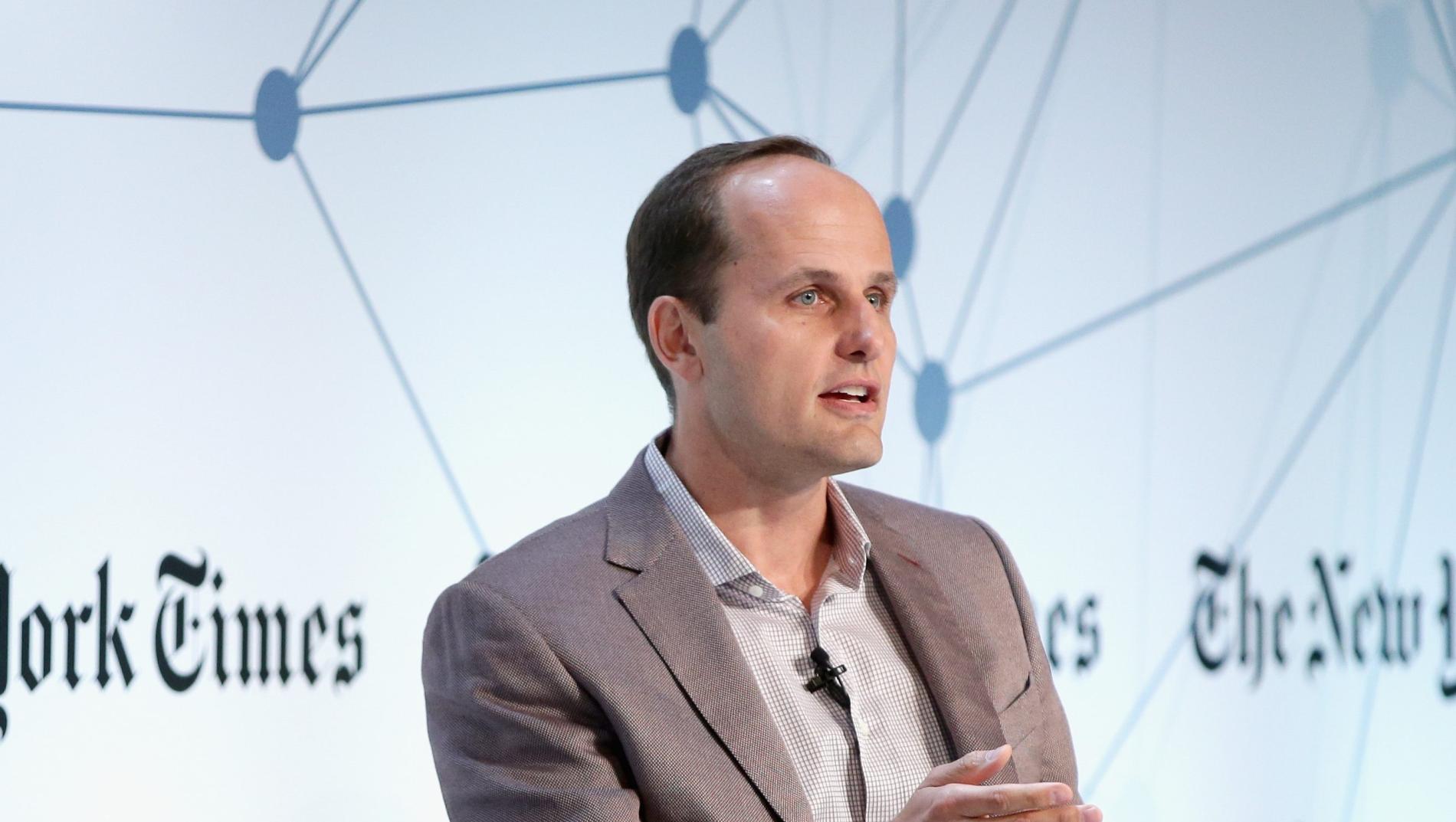 头条
头条
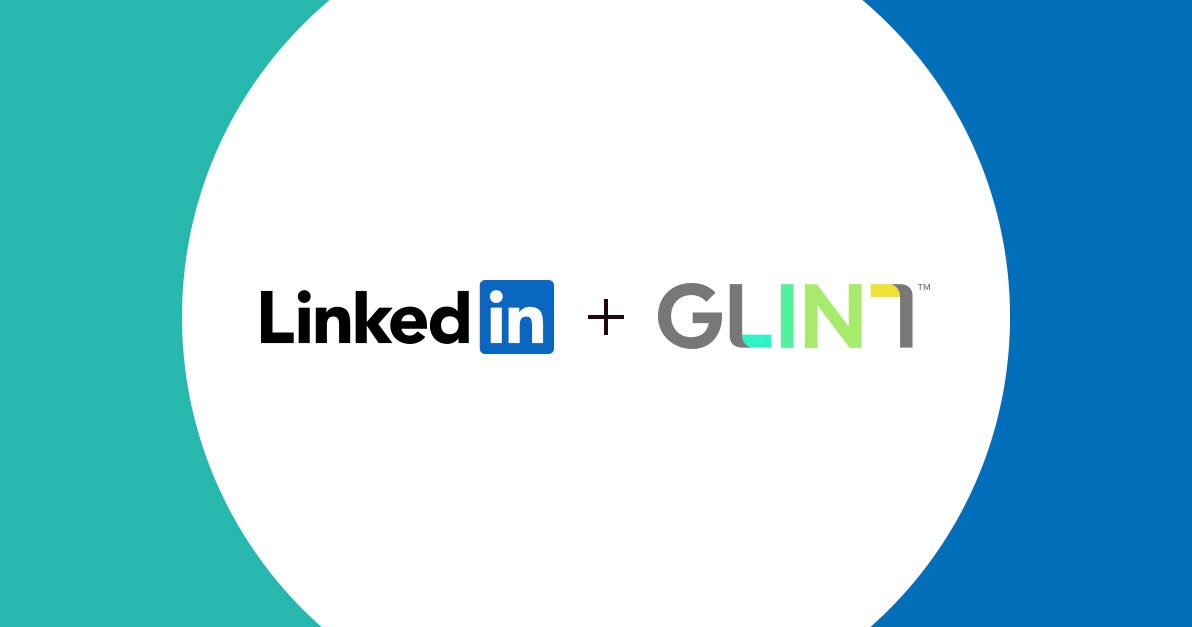 头条
头条
 头条
头条
 头条
头条
 头条
头条
 头条
头条

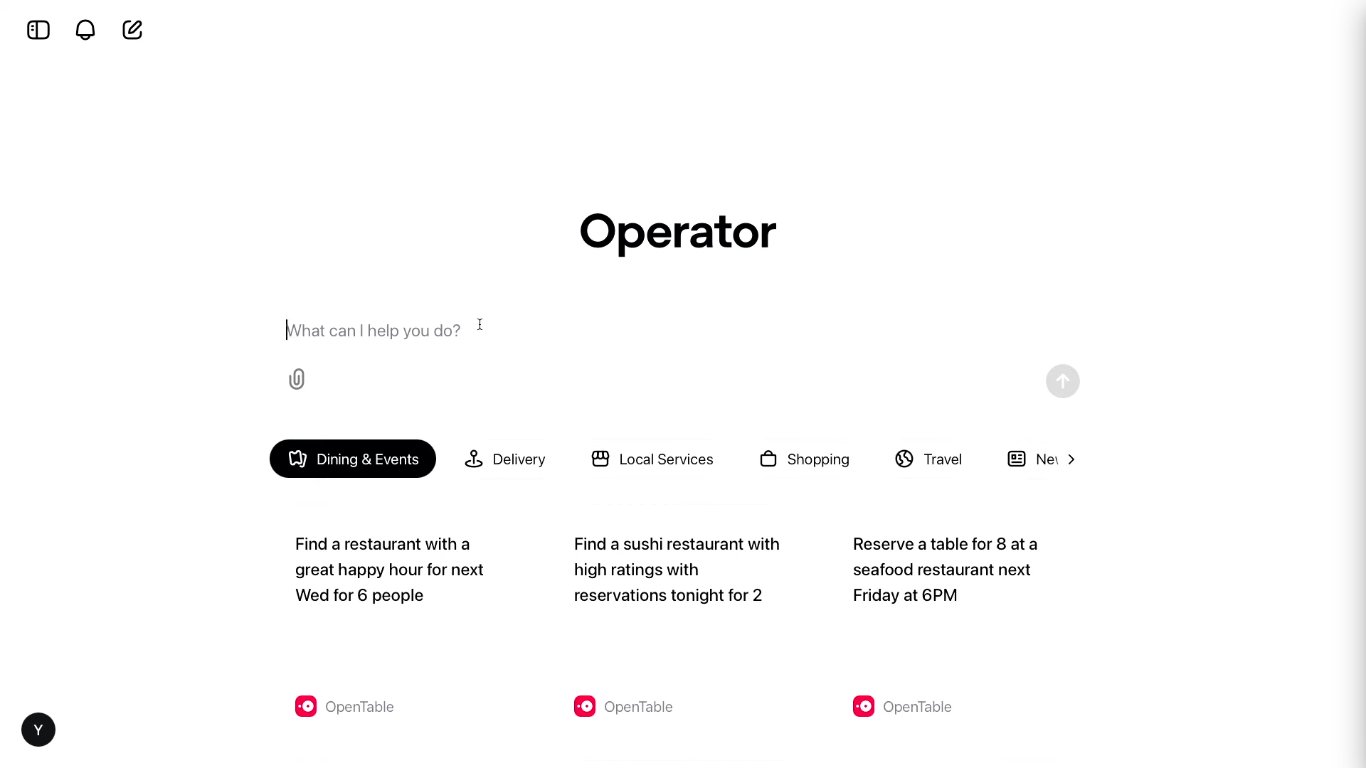
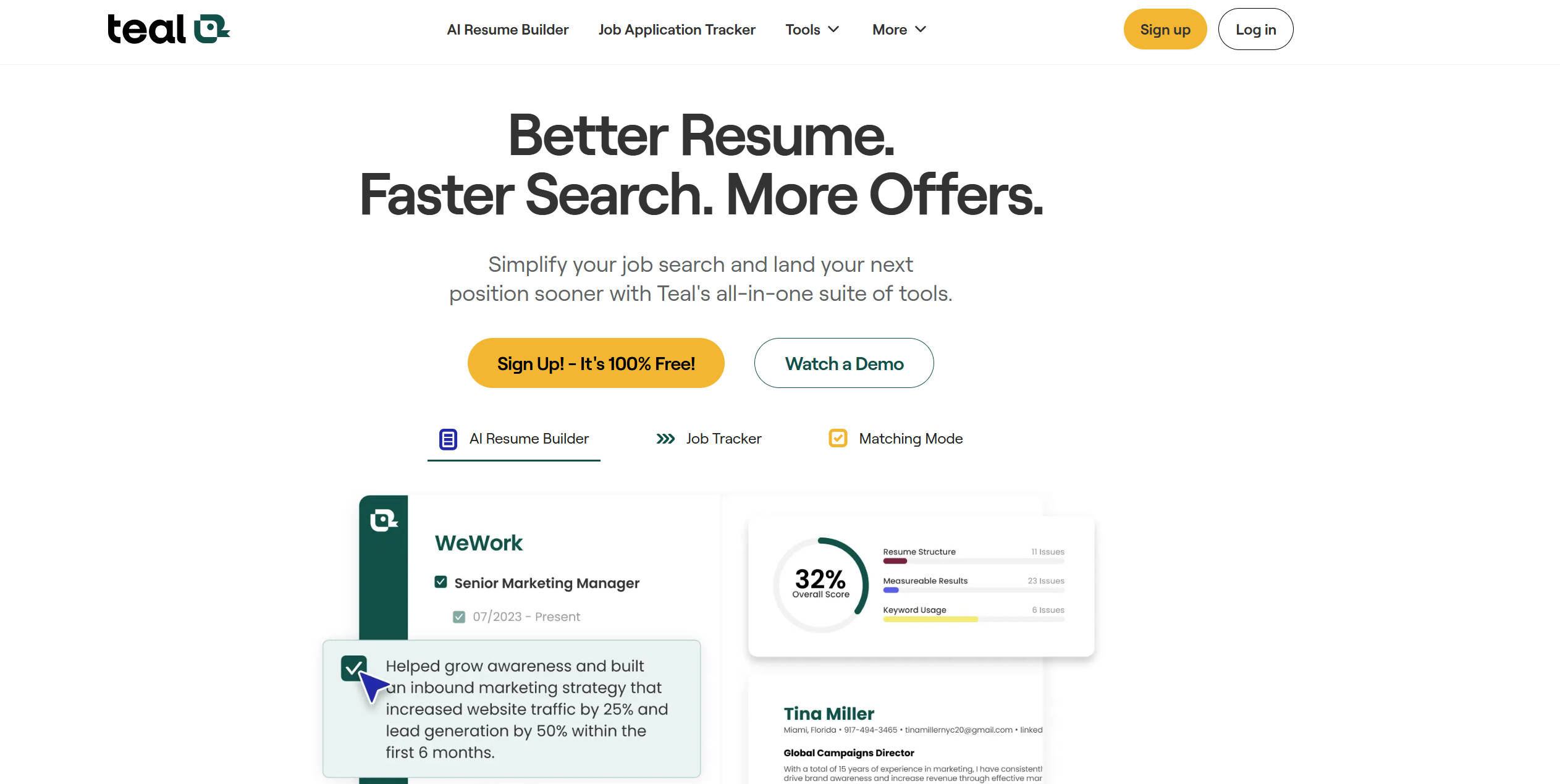
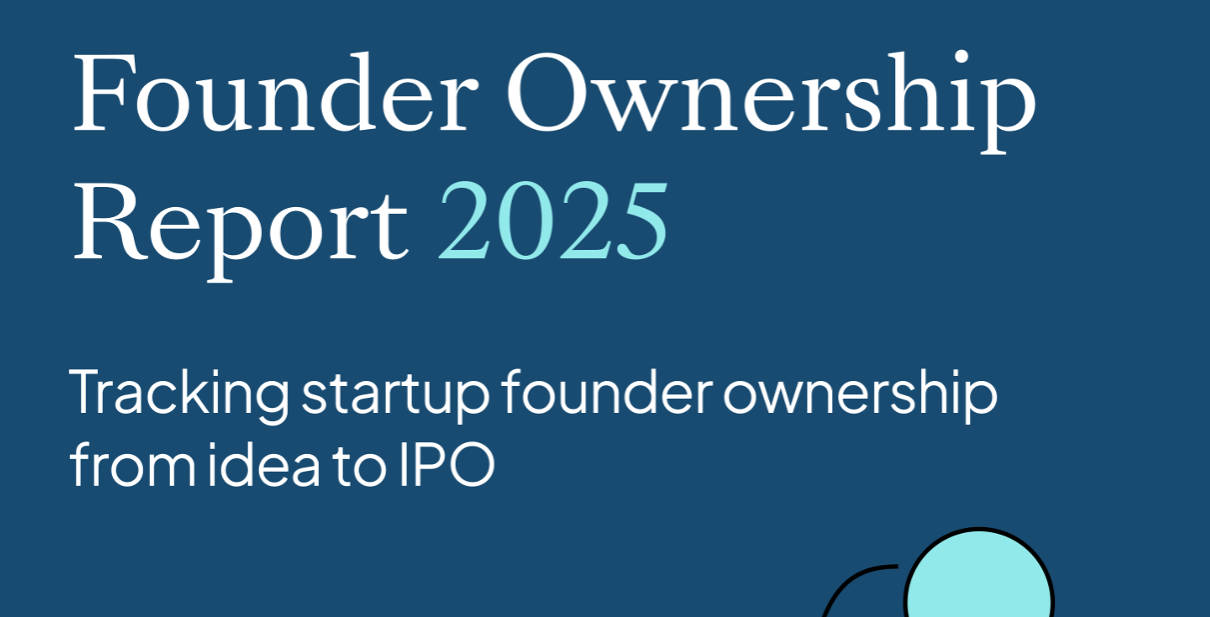

 扫一扫 加微信
hrtechchina
扫一扫 加微信
hrtechchina

